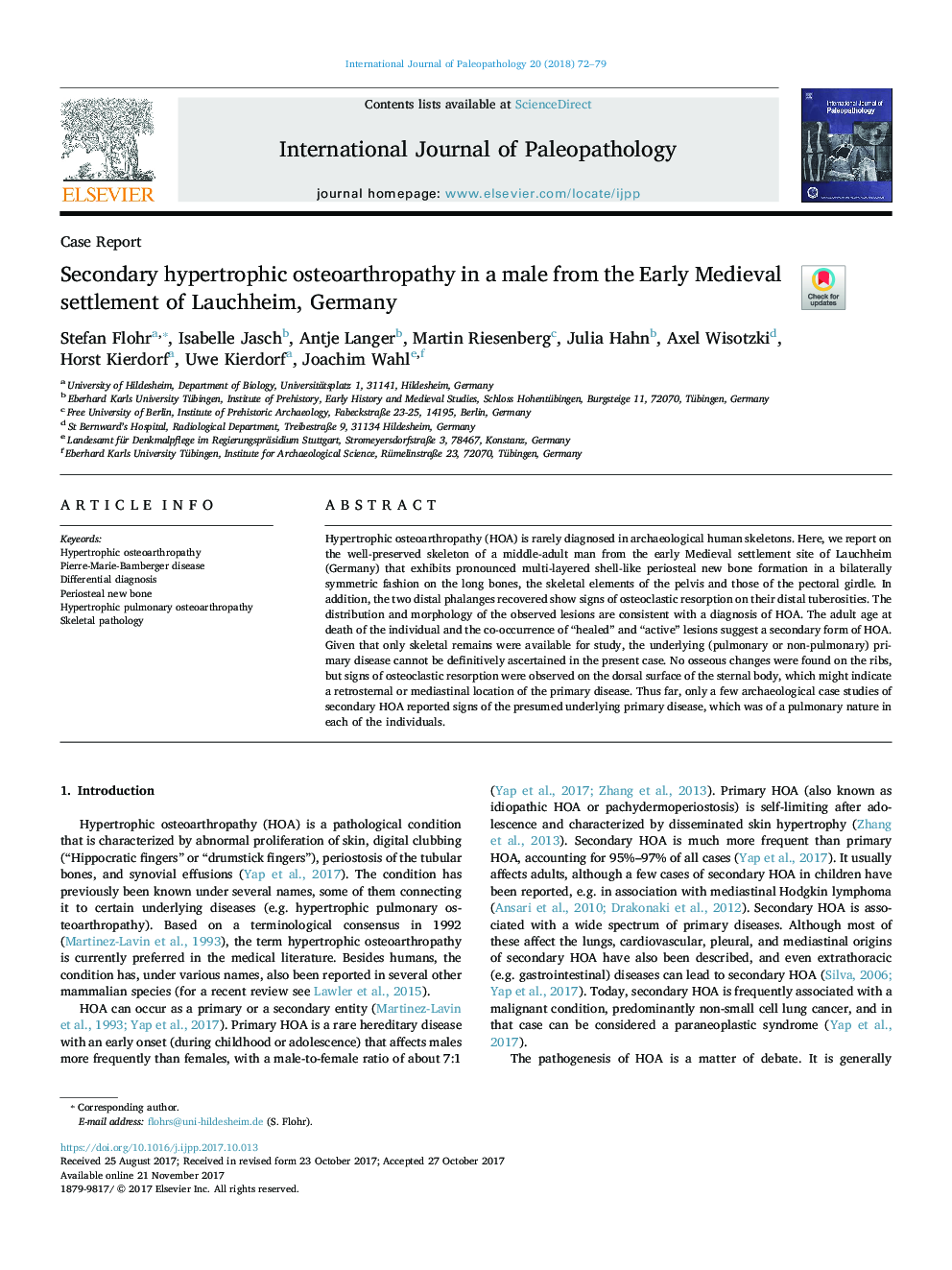| Article ID | Journal | Published Year | Pages | File Type |
|---|---|---|---|---|
| 6554784 | International Journal of Paleopathology | 2018 | 8 Pages |
Abstract
Hypertrophic osteoarthropathy (HOA) is rarely diagnosed in archaeological human skeletons. Here, we report on the well-preserved skeleton of a middle-adult man from the early Medieval settlement site of Lauchheim (Germany) that exhibits pronounced multi-layered shell-like periosteal new bone formation in a bilaterally symmetric fashion on the long bones, the skeletal elements of the pelvis and those of the pectoral girdle. In addition, the two distal phalanges recovered show signs of osteoclastic resorption on their distal tuberosities. The distribution and morphology of the observed lesions are consistent with a diagnosis of HOA. The adult age at death of the individual and the co-occurrence of “healed” and “active” lesions suggest a secondary form of HOA. Given that only skeletal remains were available for study, the underlying (pulmonary or non-pulmonary) primary disease cannot be definitively ascertained in the present case. No osseous changes were found on the ribs, but signs of osteoclastic resorption were observed on the dorsal surface of the sternal body, which might indicate a retrosternal or mediastinal location of the primary disease. Thus far, only a few archaeological case studies of secondary HOA reported signs of the presumed underlying primary disease, which was of a pulmonary nature in each of the individuals.
Related Topics
Life Sciences
Biochemistry, Genetics and Molecular Biology
Physiology
Authors
Stefan Flohr, Isabelle Jasch, Antje Langer, Martin Riesenberg, Julia Hahn, Axel Wisotzki, Horst Kierdorf, Uwe Kierdorf, Joachim Wahl,
